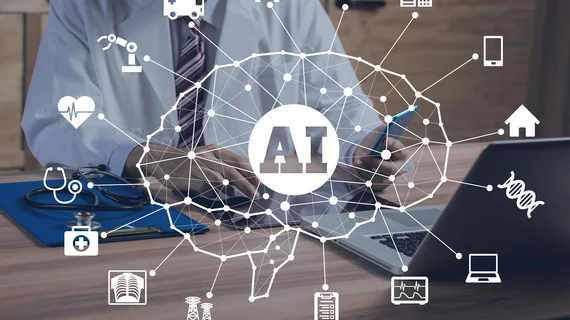AI detects changes ‘invisible’ to humans, helps radiologists ID breast cancer
AI holds a lot of promise to revolutionize radiology, and a new algorithm—when combined with a radiologists’ eye—can dramatically improve a reader’s accuracy at spotting breast cancer on mammograms.
Trained on nearly 1 million screening mammography images, researchers from New York University found their algorithm could push radiologists’ ability to accurately identify breast cancer to nearly 90%. The researchers published their findings earlier this month in IEEE Transactions on Medical Imaging.
"AI detected pixel-level changes in tissue invisible to the human eye, while humans used forms of reasoning not available to AI," Krzysztof J. Geras, PhD, assistant professor in the Department of Radiology at NYU Langone, said in a statement. Geras went on to explain that the ultimate goal of their work is to “augment,” not replace, the role of a radiologist.
In 2014 alone, clinicians performed more than 39 million mammography exams in the U.S. to screen women with no symptoms for breast cancer. Those who receive abnormal findings are referred for a biopsy. Geras and colleagues at NYU wanted to try and create a tool to help radiologists reduce those unnecessary biopsies.
The team collected and analyzed images taken at NYU Langone Health over a seven year period, connecting the scans with biopsy results. The result: a database of 229,426 digital screening mammograms and more than 1 million total images. Geras noted that most AI-based studies use databases limited to 10,000 images or fewer.
The convolutional neural network was trained to analyze images in the database that already had been diagnosed by one of 14 radiologists. Overall, the AI platform achieved an area under the curve of 0.895 in predicting the presence of cancer in the breast. And when combined with analysis performed by a radiologist, it notched an accuracy of 90%.
In the future, the researchers want to increase the training data for their model, hoping to further increase its accuracy.
"The transition to AI support in diagnostic radiology should proceed like the adoption of self-driving cars—slowly and carefully, building trust, and improving systems along the way with a focus on safety," said first author Nan Wu, a doctoral candidate at the NYU Center for Data Science.

